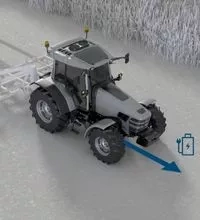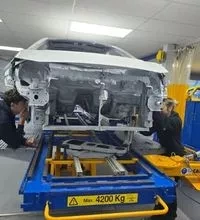6 lessons from the commercial industry
In this article: Vehicle connectivity is growing, but it’s in the agricultural and commercial sectors where some of the biggest developments are happening
Connectivity in agricultural machinery and commercial vehicles can deliver huge benefits for operators, and it’s become a hotbed of development that could spill into the passenger vehicle sector. Here are the six technologies transforming the way vehicles communicate:
- John Deere is using connectivity to enhance customer productivity. The firm’s MyOperations app allows farmers to see where their machines are and what they are doing via a smartphone or tablet. From there, they can change combine harvester settings remotely to optimise grain quality, with the driver confirming the changes via an in-cab display.
- Another John Deere system, Machine Sync, allows a harvester driver to take command of a tractor and grain trailer once the harvester needs unloading. The driver is able to steer the tractor and trailer relative to the harvester’s speed and direction of travel.
- Caterpillar-owned diesel-engine maker Perkins has come up with SmartCap. Replacing the existing oil filler cap, it allows users to connect a mobile device to an engine via the Perkins My Engine App on their smartphone to monitor its performance. It can relay information including running hours, consumables and service reminders, and location, meaning invaluable information on the engine is at the user’s fingertips.
- DAF is participating in a two-year, £8.1m trial of ‘platooning’ in the UK, led by transport research laboratory TRL and backed by the Department for Transport. Platooning employs a mixture of radars, cameras and wifi to enable several wirelessly connected trucks to follow one another on the motorway a short distance apart. Using driving information relayed from the first truck in the platoon, the following vehicles brake, accelerate and steer automatically without any intervention from their drivers. Drivers can join and leave the platoon at any time. This connected way of driving can cut fuel use by 10%, according to DAF.
- Renault Trucks – which manufactures both light and heavy vehicles – launched its Vantelligence connected telematics systems last year. It allows its van customers to track the whereabouts of their vehicles remotely, monitor the behaviour of their drivers (are they accelerating too harshly?) and keep tabs on ancillary equipment such as refrigeration units.
- The European Commission has recently devised new rules to increase the deployment of digital connectivity – ‘Cooperative Intelligent Transport Systems’ – on the EU’s roads, which could involve cars and trucks talking to one another. In Sweden and Norway, a cloud-based service, Connected Safety, already allows Volvo cars and trucks to alert each other to hazardous driving conditions automatically whenever hazard warning lights are activated.




